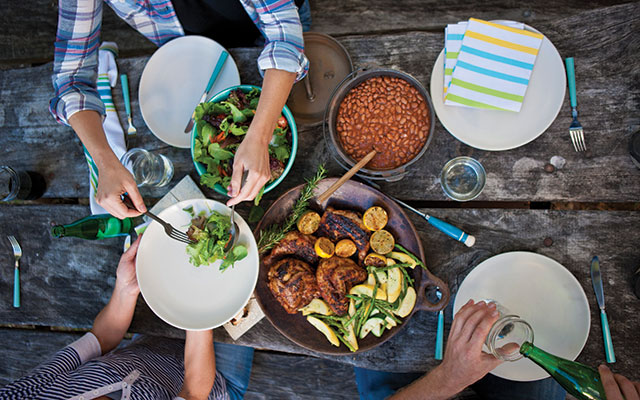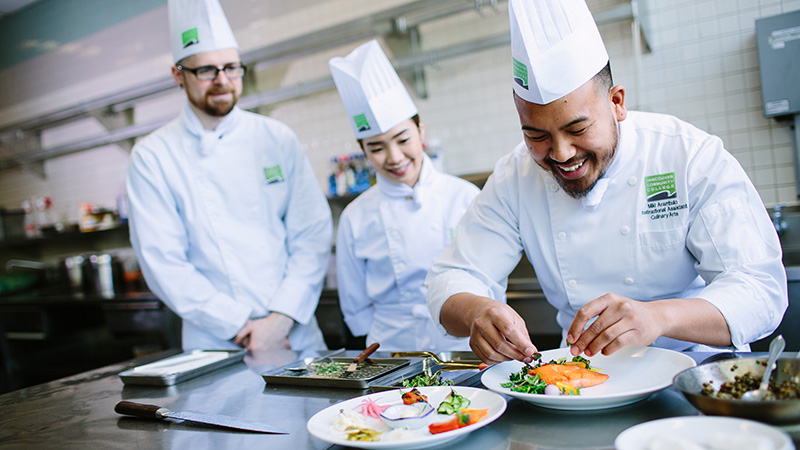A Century of Culinary Evolution: Tracing the Remarkable Transformation of a Timeless Dish Across 100
Introduction:
The culinary journey through the past century offers a fascinating glimpse into the ever-changing tapestry of flavors, techniques, and cultural influences that define our relationship with food. At the heart of this evolution lies a single dish, its story intertwined with the ebb and flow of history. In this exploration, we delve deep into the evolution of a dish, spanning a hundred years of innovation, adaptation, and creativity. From its humble beginnings to its contemporary interpretations, we embark on a culinary odyssey that illuminates the rich tapestry of gastronomy and the human experience.
The Roaring Twenties 
Emerging from the ashes of World War I, the 1920s heralded an era of unprecedented change and prosperity. In kitchens across America, traditional recipes underwent a metamorphosis, infused with newfound creativity and flair. Our dish, a classic pot roast, emerged as a quintessential symbol of the era's abundance and comfort. Slow-cooked to perfection, the pot roast embodied the spirit of familial warmth and conviviality, its aroma filling homes with the promise of hearty sustenance and shared joy.
Depression-Era Resilience 
The Great Depression cast a shadow of economic hardship across the nation, challenging families to make do with limited resources and ingenuity. In the kitchens of the 1930s, culinary traditions were reshaped by the imperatives of thrift and resilience. Our pot roast evolved into a humble yet nourishing one-pot meal, its ingredients carefully rationed and stretched to feed hungry mouths. Root vegetables and pantry staples took center stage, transforming the dish into a testament to the indomitable spirit of resilience and solidarity in the face of adversity.
World War II Rationing
The onset of World War II brought further upheaval to kitchens around the world, as rationing and scarcity became the new normal. In the midst of ration books and food shortages, our dish adapted once again, with substitutions and innovations born out of necessity. Potatoes replaced carrots, and onions gave way to leeks, reflecting the creative resourcefulness of wartime cooks. Despite the challenges, the enduring appeal of a comforting pot roast remained undiminished, offering a taste of home and stability in uncertain times.
Post-War Prosperity 
The post-war era of the 1950s witnessed a transformative shift in culinary culture, fueled by unprecedented prosperity and technological innovation. In suburban kitchens across America, the advent of modern appliances revolutionized the way families cooked and ate. Our pot roast, once a rustic staple, underwent a metamorphosis into a culinary centerpiece fit for the burgeoning middle-class table. Garnished with pearl onions and served with velvety mashed potatoes, it epitomized the aspirational ideals of the American Dream, its aroma evoking the promise of prosperity and abundance.
Cultural Revolution
The cultural upheavals of the 1960s and 1970s brought a newfound spirit of exploration and experimentation to the culinary world. Influenced by the rise of global travel and cross-cultural exchange, chefs embraced exotic spices and bold flavors in their quest for culinary innovation. Our pot roast, once a symbol of American homestyle cooking, embraced the vibrant tapestry of world cuisines, incorporating chili peppers and cumin to create a savory fusion dish that reflected the diversity and dynamism of the era.
Health-Conscious Cuisine 
As concerns about nutrition and wellness took center stage in the 1980s and 1990s, the culinary landscape underwent a seismic shift towards lighter, healthier fare. Our pot roast received a modern makeover, with leaner cuts of meat and an emphasis on fresh, seasonal ingredients. Slow-cookers and pressure cookers became indispensable tools in the health-conscious kitchen, allowing families to enjoy homemade meals with minimal effort and maximum flavor. The pot roast, once synonymous with indulgence, became a symbol of balance and moderation in an increasingly health-conscious society.
Global Fusion and Culinary Innovation
The dawn of the 21st century ushered in an era of unprecedented culinary creativity and experimentation. In kitchens around the world, chefs pushed the boundaries of tradition, combining diverse ingredients and techniques to create bold new interpretations of classic dishes. Our pot roast became a canvas for culinary innovation, its flavors infused with influences from every corner of the globe. From Korean-inspired bulgogi pot roast to Latin-infused mole sauces, the possibilities were endless, reflecting the interconnectedness of food cultures in the digital age.
Sustainability and Ethical Eating 
As the 2020s unfolded, a growing awareness of environmental sustainability and ethical eating practices began to shape culinary trends. Consumers became increasingly mindful of the impact of their food choices on the planet and animal welfare. Our pot roast, once a staple of meat-centric meals, underwent a transformation to align with these values.
Chefs and home cooks alike embraced plant-based alternatives, reimagining the pot roast with hearty vegetables such as portobello mushrooms, eggplant, and jackfruit. Slow-cooked in rich vegetable broth infused with herbs and spices, these innovative plant-based renditions captured the essence of comfort and flavor without compromising on sustainability.
Furthermore, sourcing ingredients locally and supporting small-scale farmers became integral to the ethos of ethical eating. Seasonal vegetables sourced from nearby farms added freshness and vibrancy to the dish while reducing carbon footprint. The pot roast evolved into a celebration of local bounty and responsible stewardship of the land, reflecting a growing consciousness of the interconnectedness between food, community, and the environment.
Technological Advancements and Culinary Automation 
In the mid-21st century, rapid advancements in technology revolutionized the culinary landscape, ushering in an era of automation and convenience. Smart kitchen appliances equipped with artificial intelligence and robotics transformed the way meals were prepared and enjoyed. Our pot roast, once laboriously slow-cooked over hours, could now be effortlessly prepared with the touch of a button.
Automated cooking devices such as robotic sous chefs and precision cooking machines ensured perfect results every time, eliminating the need for hands-on supervision. Customizable flavor profiles and dietary preferences could be programmed with precision, catering to individual tastes and dietary restrictions with ease.
Moreover, 3D food printing technology allowed for unprecedented creativity in presentation and texture, turning the humble pot roast into a culinary work of art. Intricately layered textures and visually stunning presentations elevated the dining experience, blurring the lines between food and fine art.
Culinary Revival and Heritage Preservation 
Amidst the rapid pace of technological innovation, there emerged a longing for authenticity and connection to culinary heritage. In the late 21st century, a culinary revival swept across the globe, celebrating traditional recipes and ancient cooking techniques passed down through generations. Our pot roast, steeped in nostalgia and tradition, found itself at the forefront of this culinary renaissance.
Artisanal butchers and heritage farmers reclaimed forgotten breeds and heirloom vegetables, preserving biodiversity and flavor diversity. Slow-cooking methods such as clay pot cooking and pit roasting regained popularity, infusing the pot roast with depth of flavor and a sense of rustic charm.
Furthermore, cultural exchange and cross-cultural collaboration enriched the culinary landscape, leading to the rediscovery of age-old recipes and culinary traditions from around the world. Our pot roast, once a symbol of Americana, became a canvas for cultural fusion and exploration, celebrating the diversity and richness of global culinary heritage.
Conclusion:
As we conclude our journey through a century of culinary evolution, we are reminded of the profound impact of food on our lives, communities, and planet. From its humble beginnings to its futuristic incarnations, the story of our pot roast reflects the enduring power of food to evolve, adapt, and inspire. Across decades and generations, it has served as a symbol of comfort, sustenance, and creativity, uniting us in a shared appreciation for the joys of the table.
As we look towards the future, one thing remains certain: the journey of culinary discovery is a never-ending odyssey, fueled by imagination, innovation, and a deep reverence for the timeless traditions that connect us to our past and nourish our souls. In a world of constant change, food remains a steadfast anchor, reminding us of our shared humanity and the simple pleasures that bring us together.


































